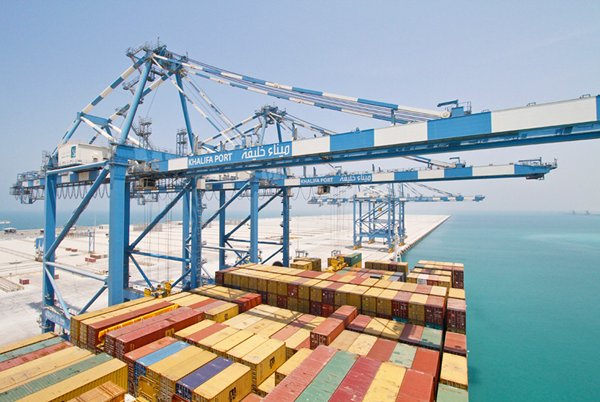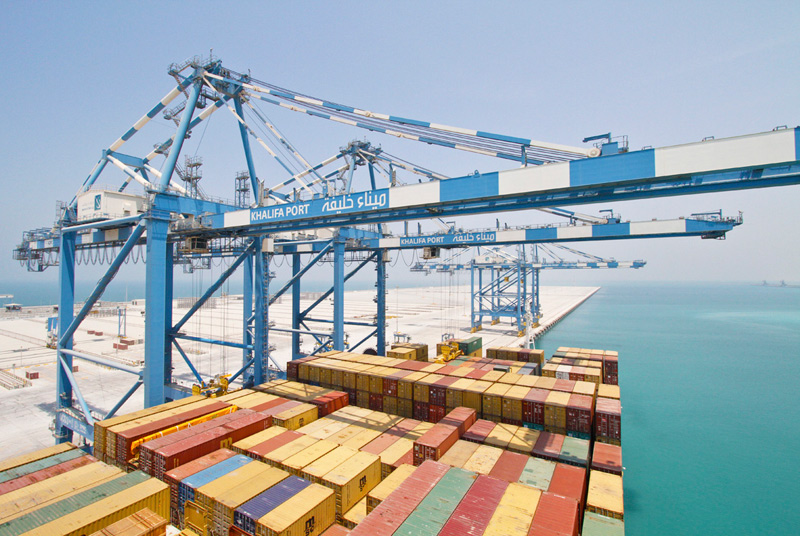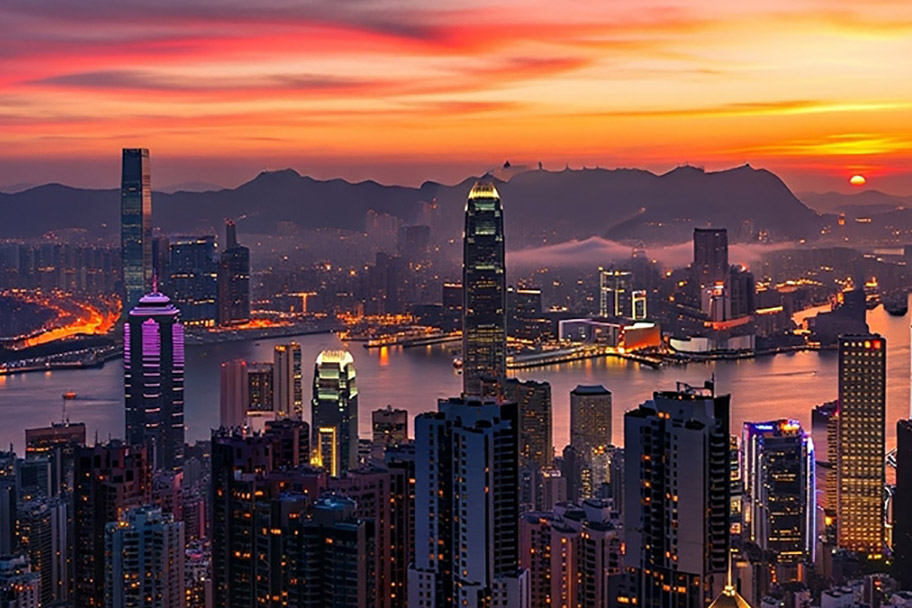Success of BRI Port Paves Way for Future China-UAE Joint Projects
Inauguration of new Khalifa Port terminal seen as likely precursor to new tranche of Middle East BRI developments.

Earlier this month, the official inauguration of the CSP Abu Dhabi Terminal marked the successful completion of yet another major Belt and Road Initiative (BRI) project. Representing a significant expansion to the existing facilities of the Khalifa Port – the principal marine cargo-handling facility serving the United Arab Emirates (UAE) – this new semi-automatic terminal was jointly developed by COSCO Shipping Ports (CSP), the port-operating division of Shanghai-headquartered China COSCO Shipping, and Abu Dhabi Ports.
The new terminal will be operated by CSP in line with a 35-year agreement signed with Abu Dhabi Ports in 2015. The Chinese developer is estimated to have spent about US$300 million on the terminal's construction, as well as having invested a further $130 million in a connected container freight station.
As well as its strategic and logistical significance, the success of the terminal is seen as paving the way for further China-UAE co-operation within the overall BRI framework. Acknowledging this as part of his address at the inauguration ceremony, Ning Jizhe, Deputy Director of China's National Development and Reform Commission, said: "This is not only a milestone in terms of Belt and Road Initiative co-operation, but it is also an auspicious prelude to further China-UAE partnerships across a variety of key areas. I have no doubt we will continue to co-operate on many other strategic fronts, while working together to deliver the broader aims of the BRI."
Sounding a similar note in his speech at the inaugural event, Dr Sultan Al Jaber, the UAE Minister of State and the Chairman of Abu Dhabi Ports, said: "The expansion of the Khalifa Port in partnership with CSP will only further enhance the UAE's role as the key trading link between the East and the West, while promoting our own economic diversification and contributing to the global connectivity promised by the Belt and Road Initiative."
Such optimism, indeed, seems more than justified for both parties, as the two countries should clearly benefit substantially in economic terms from the expansion of the port. The new facility – a deep-water, semi-automated container terminal – has been designed to handle an annual throughput of 2.5 million TEUs, while its 16.5-metre depth should allow it to accommodate the most mammoth of mega-vessels, including those with a freight capacity in excess of 20,000 TEUs.
For its part, the new container freight station, which extends across a total area of 275,000 sq m, offers full and partial-bonded container-shipment facilities. It will also operate a wide range of container-packing services, provide warehousing for de-consolidated cargo and have optimised connectivity with other Khalifa Port terminals.
In addition to its strategic geographic advantages, the enlarged capacity of the port is also said to be somewhat timely. In part, this is down to increasing concern over the US use of trade tariffs to drive foreign policy and the resulting scramble among those nations affected to find alternative trading partners.
The UAE, though, is already one of China's primary trade partners in the Middle East. In 2017, bilateral trade between the two countries increased by 15%, reaching more than $53 billion for non-oil trade and accounting for 14.7% of the UAE's total foreign trade. In terms of trade flowing the other way over the same period, the UAE accounted for nearly 30% of total Chinese exports to the Middle East and about 22% of total Middle East-China trade. In terms of future developments, bilateral trade is expected to rise to $70 billion a year by 2020.
In addition to facilitating a higher level of trade between the countries that developed the facility, the new terminal could also take on much of the regional transshipment business currently funnelled through other parts of the Middle East and Africa. With its upgrade now in place, the Khalifa Port has moved from being the 89th largest container port in the world to becoming one of the top 25. Over the next five years, its ranking is set to rise even higher, with plans already in place to increase the port's total throughput capacity to 9.1 million TEUs per annum.
The new terminal should also help accelerate the level of global investment in the adjoining Khalifa Industrial Zone Abu Dhabi (KIZAD), the region's largest industrial, manufacturing and logistics hub and Free Trade Zone. The Zone, which extends across 410 sq km, is already home to more than 200 tenants and has attracted $17.7 billion in investment.
In a supplementary development, 19 Chinese companies have already signed land-lease agreements within the newly created Khalifa Port Free Trade Zone. Officially launched in August 2017, the site is being developed by the Chinese Jiangsu Provincial Overseas Cooperation and Investment Company (JOCIC).
Geoff de Freitas, Special Correspondent, Abu Dhabi





